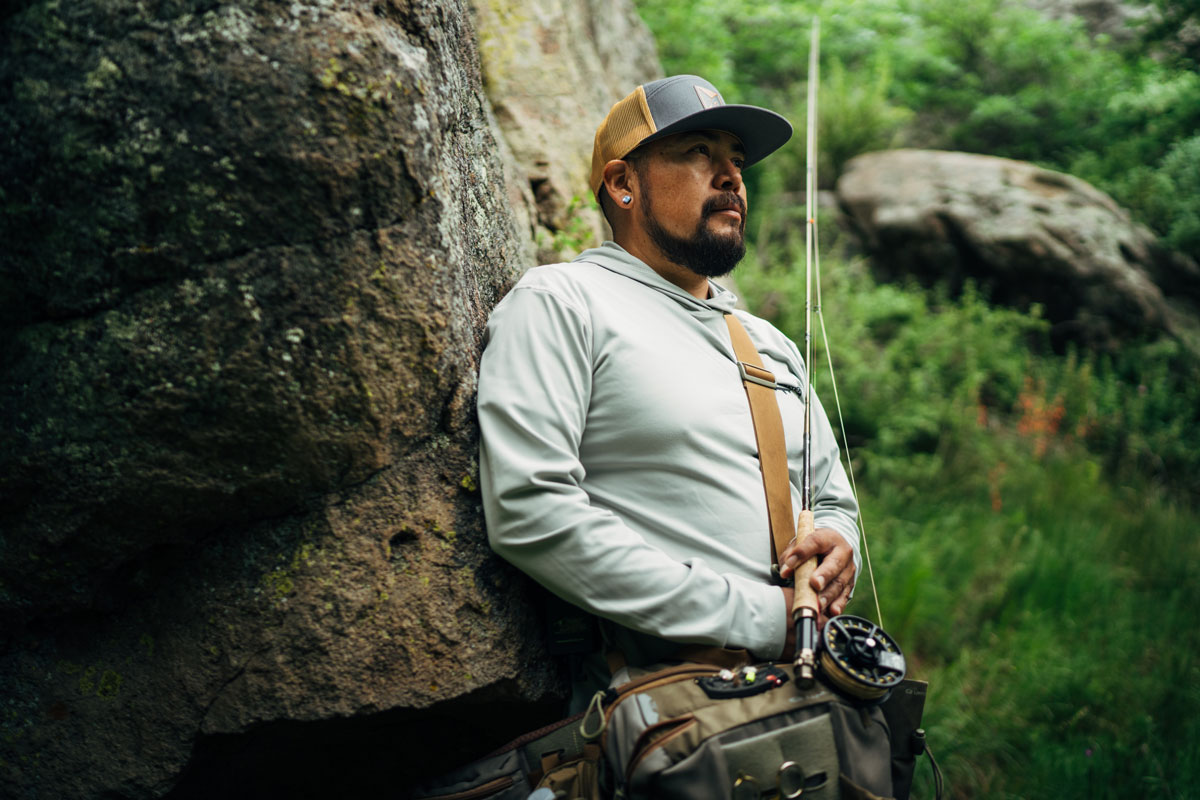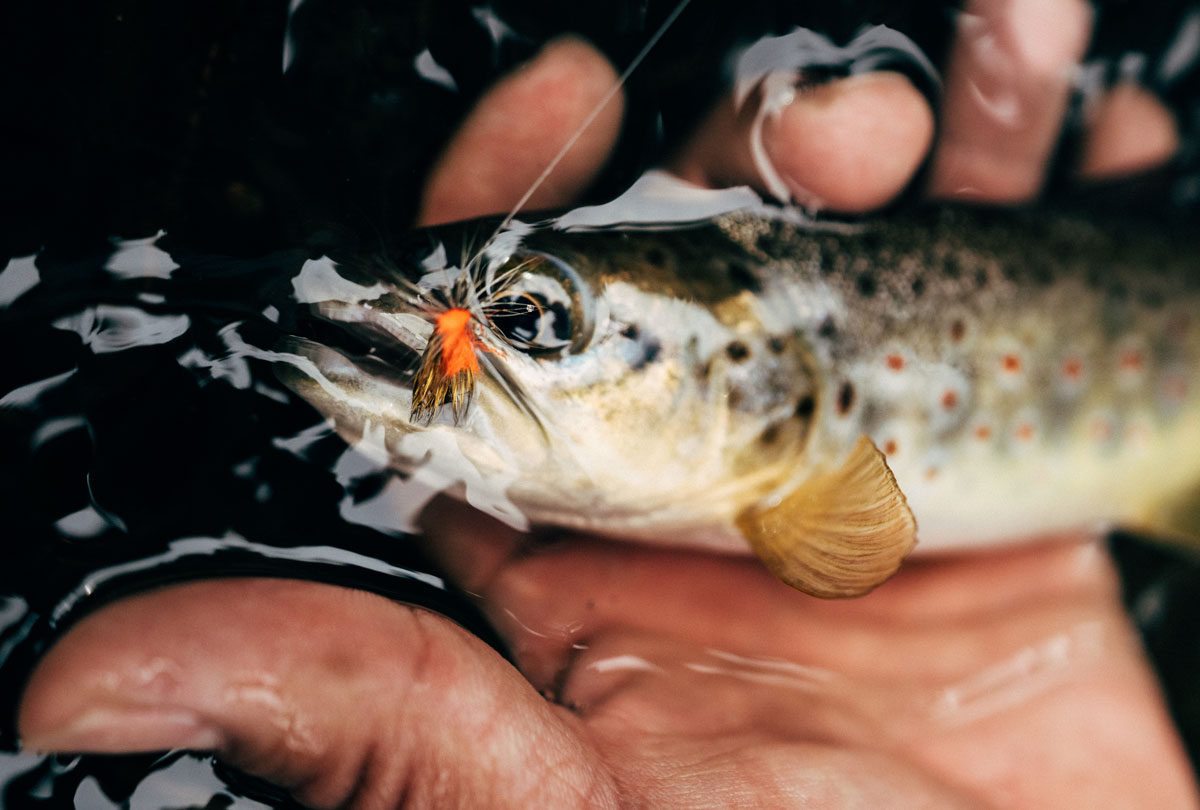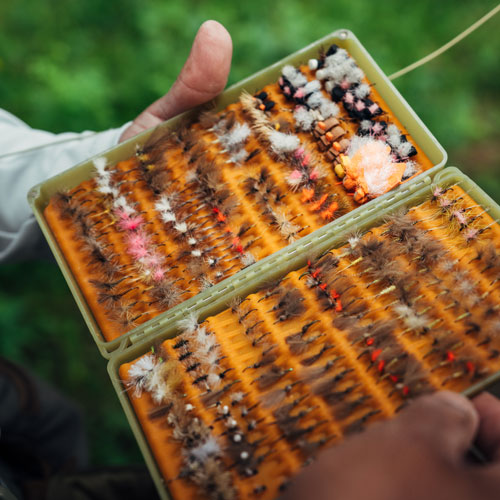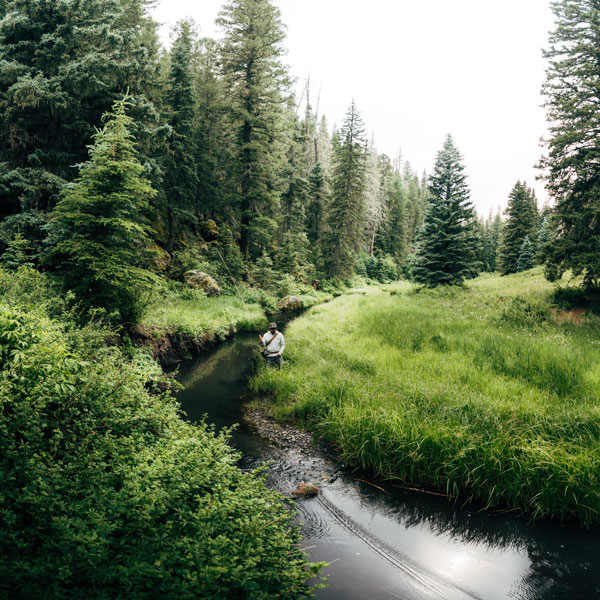The Future of Fly Fishing in New Mexico
Conservation at the Confluence of Science, Sport, and Culture
Oct / 2025

Fly fishing and conservation have always gone hand in hand — at least for as long as world-renowned New Mexico fly fisherman Norm Maktima can remember.
As a child, when he wasn’t walking with his father along a lonely stretch of stream near his home in Pecos, N.M., or wrangling a fresh catch on a mountain lake, Maktima was working with his local fly fishing club to plant willow trees that stabilize streambanks, to clean up rivers, and to learn about freshwater ecosystems.
Nature and nurture, ecology and recreation are what drew Maktima, a Pecos resident and former competitor for Fly Fishing Team U.S.A., to the sport in the first place. And it’s an ethos he’s hoping to pass along to the next generation of anglers as climate change intensifies and as New Mexico endures a decades-long drought.
“It’s up to us, the ones that have been in this industry, that have been fly fishing for a long time, to really teach the next generation how to be more responsible with the water we have,” says Maktima.
A culture of conservation
It wasn’t until the mid-1800s that fly fishing emerged in the American Southwest, but Native Americans — including Maktima’s Puebloan ancestors — have fished New Mexico’s waters for hundreds of years.
Maktima learned the sport at the age of 7 from his father, who is from the Hopi Tribe and Laguna Pueblo. Alongside practical instruction — like learning to tie intricate flies that mimic fish’s natural food source — Maktima’s father imparted cultural knowledge in the form of storytelling. He learned about the interconnectedness of the natural world and deepened his respect for all living things.
“There’s a lot more to fly fishing than just catching fish,” Maktima says. “It’s understanding how insects live, thinking about the trout’s food source rather than just the trout. It’s understanding water temperature and oxygenation. The pH balance and the nutrient content have to be optimal.

“That was what I recognized as a kid, how I could meld and marry fly fishing, culture, science. It all came into play.”
As a teenager, he became skilled at tying flies — an art form unto itself — and began competing in youth fly fishing tournaments. In 1998, he represented the U.S. Youth Fly Fishing Team at the world championships in Wales, taking home the individual gold medal and helping his team secure second place.
Today, Maktima is a legend in his sport. An experienced guide, he puts his deep knowledge of the flora, fauna, and flows of New Mexico’s waterways to use, leading clients on fly fishing expeditions. He designs and sells flies and fly fishing goods inspired by his Puebloan culture. He coaches the world champion USA Fly Fishing Women’s Team, and he advocates alongside his peers for sustainability in his sport.
‘Every year, we’re crossing our fingers’
The fishing industry is a significant contributor to New Mexico’s economy as tourists flock to the state’s waters. In 2023 fishing and boating generated nearly $93 million dollars in profit for the state.
Maktima says the industry’s fortunes have always ebbed and flowed with the rise and fall of New Mexico’s rivers and streams. Snowy winters yield strong, frigid spring flows that make ideal spawning habitat for species like trout and native Rio Grande Cutthroat. In recent years, however, warmer, drier winters have led to fewer fish.
Some of the ebb and flow is to be expected — a natural consequence for an industry so tied to the land. But Maktima says inconsistency in precipitation and weather patterns over the past quarter-century has introduced extra uncertainty.


As New Mexico heats up and aridification intensifies, scientists anticipate about 25% less water in New Mexico’s rivers, streams, and aquifers over the next 50 years. A hotter, drier high desert also means more frequent, more severe forest fires, which can pollute streams, lakes, and rivers, killing off fish.
Maktima says the fly fishing industry has stepped up its conservation game in recent years, with organizations like New Mexico Trout, Trout Unlimited, and others coming together to care for the state’s riparian ecosystems, to promote the fishing of hardier, warmer-water species, and to prevent mining operations from polluting and stripping water from underground aquifers.
It’s efforts like these that keep Maktima feeling optimistic about the future of his sport.
“With more of us out here learning and understanding our impact, I’m hopeful that our fly fishing community can help shape the industry going forward,” he says.
